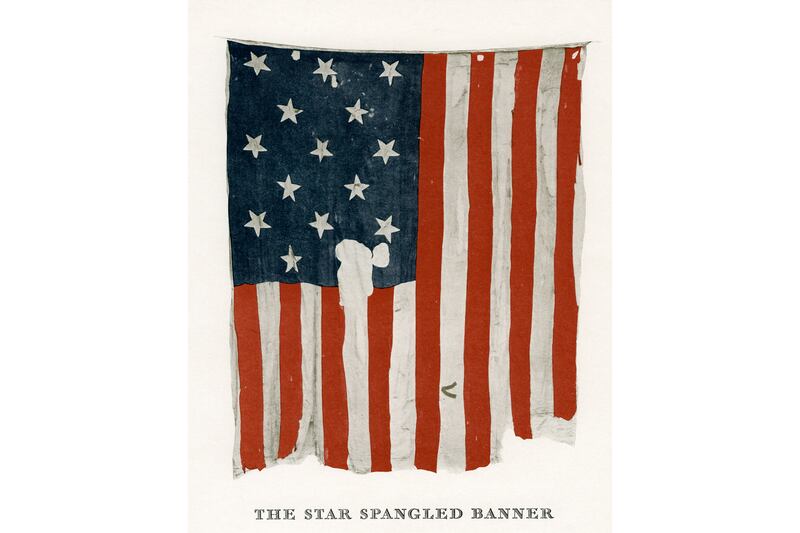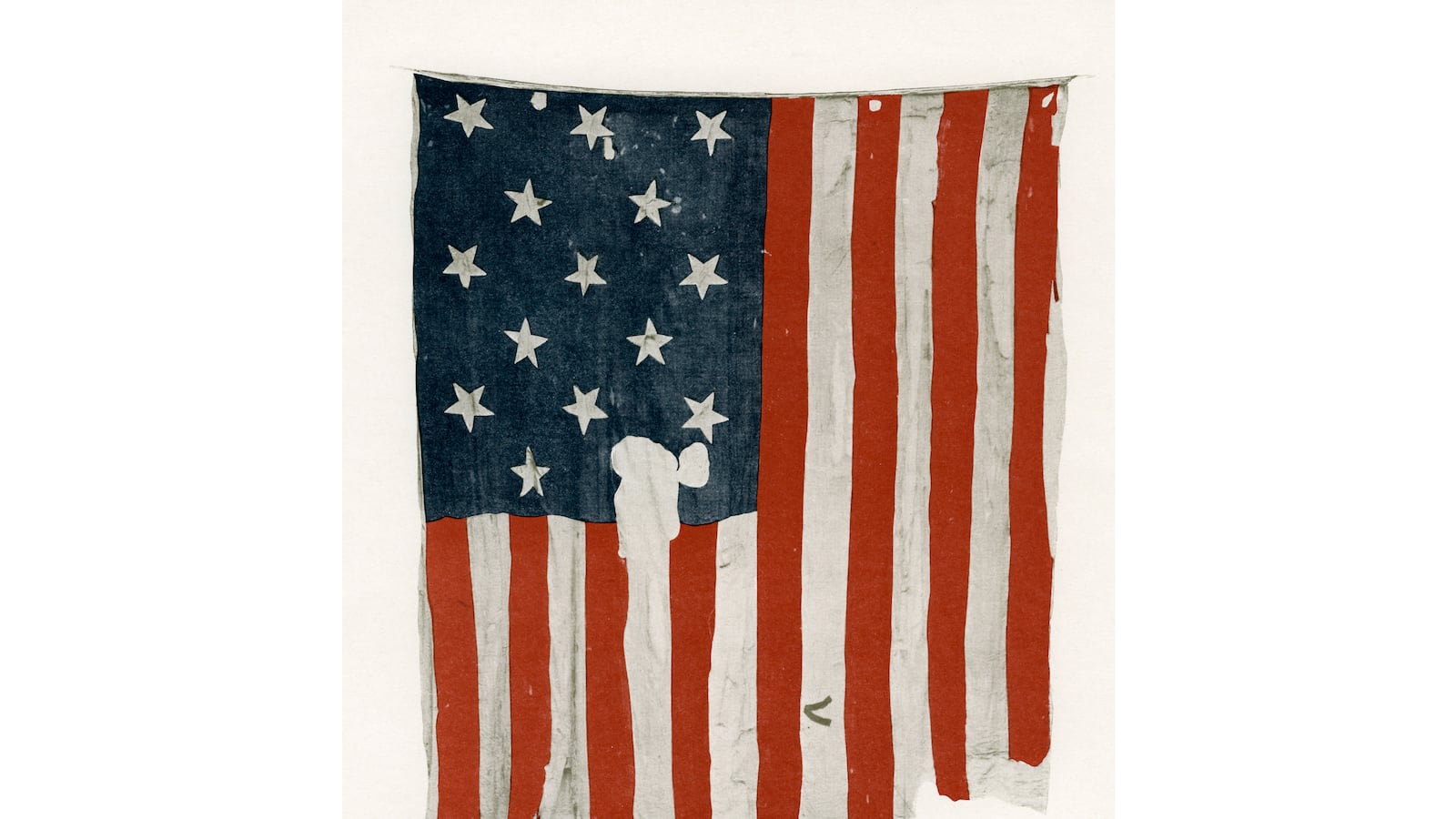The story of how “The Star-Spangled Banner” became the national anthem in 1931 is the story of a red-white-and-blue culture war. The patriotic song, written by Washington attorney Francis Scott Key, had been popular ever since it was written in August 1814. But it was only 117 years later, in March 1931, that Congress designated the song as the national anthem, thanks to a nationwide lobbying campaign by veterans organizations and Confederate sympathizers who prevailed over the objections of pacifists and educators. In a struggle for the meaning of American patriotism, the red prevailed over the blue.

The campaign to make “The Star-Spangled Banner” the national anthem began on the centennial of the song in 1914. It gained strength with President Woodrow Wilson’s 1917 executive order designating the song as the anthem of the U.S. armed forces. The ritual of playing “The Star-Spangled Banner” before baseball games began in the 1919 World Series. The song’s militaristic imagery and self-righteous patriotism appealed to conservatives and Southerners.
But after World War I, resistance to the “Banner” grew, according to a history of the song commissioned by the Department of the Interior in 1969. The History of the Star Spangled Banner from 1814 to the Present, written by George J. Sevejda, documented how supporters and opponents clashed throughout the 1920s.
The song was not so popular in the north, where “America the Beautiful,” written by Katharine Lee Bates in 1893 and sung to music by written by Samuel Augustus Ward in 1882, was sung more often on patriotic occasions. Resistance to “The Star-Spangled Banner” also flared among blacks, pacifists, and advocates of temperance. Professional educators complained that the lyrics derided England, a friendly country. And at a time when the 19th Amendment banned the sale of alcoholic drinks, many objected to the tune’s origins in the Anacreontic Society, a London drinking club.
And these critics had influence. In June 1922, Augusta Stetson, a wealthy Christian Scientist, published newspaper advertisements attacking the “Banner” in the New-York Tribune, The Baltimore Sun, and The Washington Post. She called the song “a poem born of intense hatred of Great Britain and wedded to a barroom ballad composed by a foreigner.” That summer Harry Barnhart, the conductor of a New York community chorus, refused to play the “Banner” at a summer concert in Central Park, saying the song was "gloomy and stimulates hatred." City officials canceled his concert and replaced him with a military band that played the “Banner.”
Debate raged in the press and the streets. For supporters of the “Banner,” the song was the perfect symbol of national feeling, and anyone who disagreed might not be patriotic. The Veterans of Foreign Wars organized an Americanization committee that promoted the song as a litmus test of loyalty. One editorialist for The Baltimore Sun noted that the “Banner” "has undergone fiercer bombardment at the hands of Americans of late than it sustained from the British ships on the occasion of the famous attack. Now as then 'The flag is still there' in spite of both literary and pacifist critics ... It does not represent international hate but national love."
Critics of the “Banner” found their patriotism questioned. Stetson was investigated, subpoenaed, and forced to testify in March 1924 about the source of her funds. No, she had not been funded by foreigners, she said. She had spent $16,000 of her own money on newspaper , and she would spend more. She took out anti-“Banner” ads in The New York Times in March 1924 and in the Times and The Washington Herald in August 1925.
She was not alone. Among black Americans, poet James Weldon Johnson and his brother Rosamund had composed a song to commemorate the birthday of Abraham Lincoln, called "Lift Every Voice and Sing," whose popularity among people of color made it known the "Negro national anthem." Johnson denied there was anything in his song to conflict with “The Star-Spangled Banner.” But he couldn't resist adding that it was "difficult to sing," and that "its sentiments are boastful and bloodthirsty."
Among genteel middle-class whites there was also hunger for an anthem more sympathetic and singable than "The Star-Spangled Banner." In 1926 the Hymn Society of America launched a campaign with the National Association of Organists to replace the “Banner” with “America.” In 1927 the National Society of Music Clubs sponsored an international competition for a new patriotic tune that would "sweep people off their feet." A $1,500 prize was offered, but no winner was selected.
Another contest for a new national anthem was sponsored by Florence Brooks-Aten of New York City in 1928, offering a first prize of $3,000 for a better national anthem. When a preliminary winner was announced in January 1929, there was only one problem. The song sucked.
"It has some nice things to say about freedom and friends and Florida," observed The New York World. "Whether this is some new way to buy Florida real estate, we cannot say ... What is wrong with the anthem we have got? ... Nothing." The contest deadline was extended, and it attracted another 4,000 entries, none of which passed muster.
The liberal intelligentsia continued its search for a better national anthem. In 1930 the educational experts at Teachers College of Columbia University condemned “The Star-Spangled Banner.” One education professor said the song taught millions of children that "the only real patriotism is warlike activity." Another educator said the “Banner” suggested that "patriotism is associated with killing and being killed, with great noise and clamor, with intense hatreds and fury and violence." The good professors preferred Bates's “America” as a national anthem.
The partisans of “The Star-Spangled Banner" were not moved. They had broader and wider support among the general public and more influence in Washington. On January 31, 1930, Congressman John Linthicum of Baltimore opened hearings on his proposal to designate “Banner” as the national anthem. He praised the song's virtues, the first of which, he said, was that “it seems to unite the forces of the South and of the North.”
Linthicum did not speak of racial unity among whites, but that was the subtext. In the decades following the Civil War, the defeated South strove to establish rituals such as Memorial Day, which honored the veterans of Northern and Southern armies equally, implying a degree of respect for the memory of the Confederacy. Southerners aggressively downplayed the idea that the Civil War was a war for emancipation of the enslaved African-Americans. Opponents of the song sensed that the movement to elevate “Banner” was, in the words of one Boston magazine in 1914, "in the interests of a sectarian movement."
The section that favored the “Banner” was the South. By the 1920s when the newly established NAACP was making an issue of the imposition of Jim Crow laws and the practice of lynching in the South, the campaign for the “Banner” was a way to defend the prerogatives of the South, to wrap the ideology of the Confederacy in the red, white, and blue bunting of American patriotism.
Of course, no one said as much during the hearings on Linthicum's bill. No African-American witnesses were called, and only one dissenting witness was heard—the tireless Stetson. Otherwise, all present extolled the “Banner” as the perfect expression of American patriotism. There can be little doubt that most Americans agreed. Supporters submitted a petition calling for the designation of the “Banner” as the national anthem that was signed by 5 million people.
A year later, Linthicum's bill came up for a vote, and the House and the Senate approved it by wide majorities. On March 3, 1931, President Herbert Hoover signed it into law. Thus, 117 years after it was written, "The Star-Spangled Banner" became our national anthem.
The unspoken racial agenda of the “Banner” supporters was displayed on June 14, 1931, when the National Society of the Daughters of 1812 and the state of Maryland, sponsored a ceremony at War Memorial Plaza in Baltimore to celebrate the new national anthem. The parade was led by a column of Boy Scouts carrying three flags: the Stars and Stripes, the red and gold flag of Maryland, and the Stars and Bars of the army of the Confederate States of America.
Veterans of the Grand Army of the Republic pulled out at the sight of the banner of their former enemies. "GAR Balks at Southern Flag in Parade," reported The Baltimore Sun. Gen. John F. King, past national commander of the GAR, "ordered the Union men to disband and fall out line," said the Baltimore Afro-American.
Etta Holloway, the leader of the pro-“Banner” forces for more than two decades, defended the flying of the Confederate flag as patriotic.
"It is shame to spoil such a beautiful occasion with talk of friction," she wrote in a letter to the Sun. "There is no North. There is no South. Nor East nor West. We are a 'sovereign nation of many sovereign states, one and inseparable. A perfect Union.'”
The Confederate flag was also a star-spangled banner, she declared.
"The Stars and Stripes, our country's flag, escorted the Stars and Bars in the pageant of June 14, proclaiming to all the world our loyalty to it and all it stands for."
In short, sympathy for the Confederacy helped elevate “The Star-Spangled Banner” from patriotic tune to national anthem.






